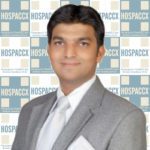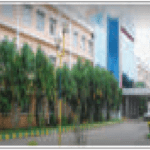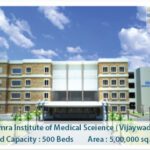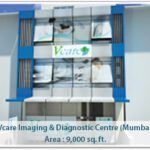Are you planning to build or restructure or venture in any healthcare venture in Senegal? Looking for information about the major healthcare players in Government, private diagnostic centers that are available in Senegal? In this article, Hospaccx Healthcare Consultancy has provided essential information on the healthcare scenario in Senegal.
Introduction
Senegal officially the Republic of Senegal is the westernmost country in continental Africa, situated on the Atlantic Ocean coastline. Over the years, the economy of Senegal has shown significant improvements. The Government of Senegal also encourages foreign investment and is committed to improve the business climate. Thus, many companies choose Senegal as a base for operations. Together with the economy, a growing demand for high-quality healthcare services is seen driven by factors such as an expanding middle and upper class, increased disposable income, and increased health consciousness. The capital and largest city is Dakar.
Demography
| Population | 18.2 million (2024 est.) |
| Population Density | 92.63 people per square km (2024) |
| Sex Ratio | 1 (1 male birth per female birth) (2024) |
| Ethnicity | Wolof (39%), fula (27.5%), serer group (16%), Mandinka (4.9%), Jola (4.2%), Soninke (2.4%) and other (5.4%). |
Distribution of Religion
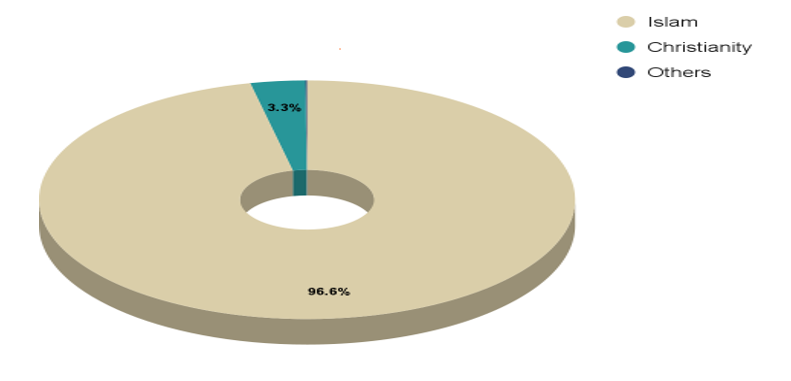
Economy
- One of sub-Saharan Africa’s most prosperous economies is Senegal. For several years, the economy has grown consistently at a rate higher than 6%.
- It is a safe place to invest because of its lengthy history of social and political stability as well as its constantly developing commercial climate.
- A significant reform plan under way could improve the economy’s competitiveness and encourage foreign direct investment (FDI) in important areas like agriculture, industry, tourism, transportation infrastructure, and extractive industries.
- Despite an abundance of natural resources such as iron, zircon, gas, gold, phosphates, and recently, multiple oil finds, Senegal’s economy is primarily driven by the sectors of mining, construction, tourism, agriculture, and fishing, which provide many jobs in rural areas.
- Senegal’s agriculture industry, one of the main drivers of the country’s GDP, is extremely susceptible to changes in global commodity prices as well as natural factors like rainfall patterns and climate change.
Connectivity
Blaise Diagne International Airport is an international airport near the town of Diass in Thies Region, Senegal, 43 kilometers east of downtown Dakar. It serves as the main airport for Dakar. Most of the Indian International airports are connected to Dakar with frequent flights. Senegal’s rail network consists of 906 km of railway at 1,000 mm, and 36 km of 1,445 mm. Dakar has one of the largest deep-water seaport along the West African Coast.
Main Corporates in Senegal
| Name | Industry | Sector | Headquarters | Founded |
| Dakar-Niger Railway | Industrials | Railroads | Dakar | 1924 |
| Groupment Aerian Senegalais | Consumer services | Airlines | Dakar | NA |
| Ikatel | Telecommunications | Mobile telecommunications | Dakar | 2003 |
| La Poste | Industrials | Delivery services | Dakar | 1962 |
| Senelec | Utilities | Conventional electricity | Dakar | 1983 |
| Sonatel | Telecommunications | Mobile telecommunications | Dakar | 1985 |
Growth plan of Senegal
The Plan for an Emerging Senegal (PES)
It is the new policy framework of the government, aiming at getting Senegal onto the road to development by 2035.
Three priorities serve as the foundation for the government’s strategic guidelines, which guide the activities required to turn this vision into real actions and outcomes for the benefit of the population.
These priorities are as follows:
- Bringing about a structural transformation of the economy: by strengthening the growth-promoting factors that are already in place and creating new industries that have the potential to create wealth, jobs, and social inclusion while also having a strong pull-on exports and investment.
- Promoting human capital: through maintaining the resource basis, encouraging the creation of sustainable areas, greatly improving people’s living standards, and fighting social injustices more persistently.
- Enabling good governance: to strengthen safety and security, defend freedoms, consolidate the rule of law, and foster an environment that is more suited to societal harmony.
Medical Tourism
- Senegal’s unique features make it an attractive target market for medical tourism. The nation is proud of its thriving customs, rich cultural history, and expanding economy.
- Senegal’s healthcare system has come a long way, but advanced medical procedures and specialised treatments are still needed. This is an amazing opportunity for medical professionals in other nations to deliver top-notch care and draw Senegalese patients.
- Understanding and adjusting to the local culture is essential to successfully entering the Senegalese market.
Some Important Health Statistics
| Total Fertility Rate | 4.2 live births per woman (2024) |
| Crude Birth Rate | 31.86 births per 1000 people (2024) |
| Crude Death Rate | 4.9 deaths per 100 people (2024 est) |
| Infant Mortality Rate | 25.42 deaths per thousand live births (2024) |
| Maternal Mortality Rate | 250 deaths per 100,000 live births (2024 est) |
| Under 5 Mortality Rate | 35 deaths per 1000 live births (2024 est) |
| Life expectancy at Birth m/f | 70 (2024 est) |
Major Diseases in Senegal
Several diseases continue to affect people who live in and travel to Senegal, some of which are related to Senegal’s tropical climate.
| Disease | Description |
| Malaria | One of the most prominent diseases is transmitted by mosquito bites. |
| Syphilis | Disease is directly related to the social environment, poor health, and housing conditions. |
| Tuberculosis | Disease is mostly localized in Dakar and Thies, and affects more men than women, with approximately 9500 cases of tuberculosis per year in Senegal and a 2–4% mortality rate. |
| Schistosomiasis | Parasitic disease common in the tropics. |
| Trypanosomiasis | A parasitic disease that has long affected the valleys in Eastern Senegal, known as Ferlo. |
| Meningitis | Outbreaks between February and March, especially in Eastern Senegal and occasionally in Dakar. |
| Cholera | Outbreaks continue to be a problem. In 2007 alone, there were over 2000 reported cases of cholera in Senegal. |
Top 5 causes of Mortality in Senegal
Top 5 causes of Mortality for females
1 Neonatal condition
2 Lower respiratory infections
3 ischemic heart disease
4 Stroke
5 Diarrheal diseases
Top 5 causes of Mortality for males
1 Neonatal condition
2 Lower respiratory infections
3 Diarrheal diseases
4 Ischemic heart disease
5 Road injury
Healthcare Scenario in Senegal
Senegal is unwaveringly dedicated to achieving universal health coverage (UHC). Over the past ten years, several programmes have been started to shield Senegalese citizens from health risks; nevertheless, these activities have not yet been fully coordinated. UHC is not possible without bolstering the health system.
- The Senegalese health system is organised in a pyramid with three tiers of care and a referral system.
- Health facilities include different tiers of hospitals, health centres, health posts, as well as social services and cleanliness. Additionally, the health sector’s management is organised into three levels: peripheral (77 health districts), intermediate (14 regions), and central (Ministry of Health and Social Affairs, or MoHSA).
- The rising private sector, which is projected to account for about 70% of all health service provision and is becoming more and more active in CMU policy, complements the public health care system, especially in Dakar, the country’s capital.
- Over the past ten years, the health sector has undergone a lot of reforms, most notably to enable the decentralisation programme, whose execution is currently lagging behind.
Healthcare Infrastructure (Rural versus Urban)
- Approximately 42% of the population lives in rural areas and 58% lives in urban areas. The largest number of hospitals are in the Dakar Region which is in the Urban area. Thus, the distribution of healthcare facilities exhibits a notable contrast between rural and urban areas.
- The people from rural areas often have to travel long distances to seek treatment in healthcare facilities which are in Urban areas.
Major Medical Institutions in Senegal
Government Institutions
Cheikh Anta Diop University of Dakar
The university was established in 1957. The School of Medicine includes departments of Pharmacy, Research, and Surgery.
Private Institutions
Senegal Health Institute
The Senegal Health Institute is in Kafountine, Senegal, West Africa. The Institute provides stable access to reproductive healthcare and family planning services for women and adolescent girls.
Major Public Hospitals
Idrissa POUYE General Hospital – 300 Beds
Centre Hospitalier National de Pikine
Ndmatou Hospital – Touba
Ouroussogui Hospital – Matam Region
Albert Royer National Hospital – Dakar
Major Private Hospitals
Tambacounda Pediatric and Maternity Hospital – 150 Beds
It is the only hospital in a large region of eastern Senegal. It serves the 100,000 inhabitants of the city of Tambacounda.
Health Center Annette Mbaye D’erneville – Hospital in Dakar
Hopital Principal de – Dakar
Hospital Center University De Fann – Dakar
Hospital Center Order De Malte: Chom – Dakar
Major Diagnostic Centres
CEDIMED (Centre de Diagnostic medical), Dakar
Imagerie Moderne du Senegal, Dakar
CDRMM, Centre de Diagnostic et de Recherche en Médecine Moléculaire, Dakar
Complex Medical La Corniche West, Dakar
Cabinet de Radiologie et d’Imagerie Medicale
Conclusion
Senegal is one of the fastest growing economies in Africa. The country’s overall health sector has appropriate government policies and institutions in place to facilitate good governance and achieve Universal Health Coverage. However, there is a growing disparity in distribution of healthcare facilities in rural and urban areas of the country. Establishment of quality hospitals in rural areas can improve this disparity. Senegal hopes to develop into a hub for regional trade and services with strong air connections, a contemporary airport, developing seaports, accessibility to mobile money and other financial technology, and enhanced ground transit. Thus, Senegal presents with a significant market opportunity for establishing hospitals with good infrastructure. Establishment of quality hospitals with adequate infrastructure can prevent citizens of Senegal from traveling for medical tourism.
If you need any support in planning and designing of a new hospital you can contact us: Hospaccx healthcare business consulting pvt Ltd on: hospaccx.india@gmail.com. Or you can visit our website www.hospaccxconsulting.com.
Related Team Members


